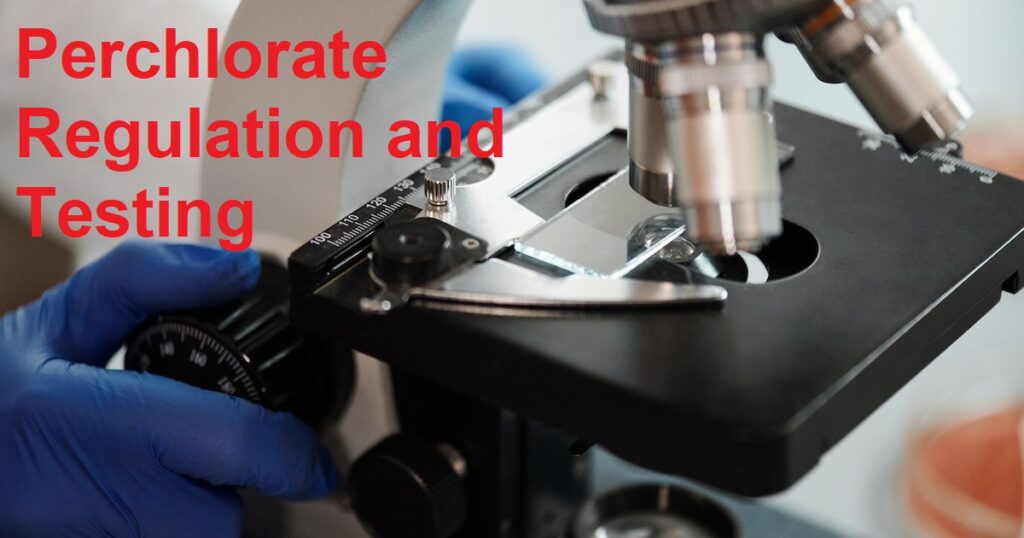Perchlorate is a chemical compound that is commonly used in the manufacturing of explosives, rocket propellants, and other industrial processes. It is also found in many consumer products such as airbags, fireworks, and matches. Although perchlorate has many important industrial applications, it can also pose a significant risk to human health.
In this article, we will discuss the health risks associated with exposure to perchlorate, the sources of perchlorate exposure, and the regulation and testing of perchlorate in various settings.
Health Risks of Exposure to Perchlorate
Perchlorate exposure can have serious health consequences, particularly for those with prolonged or repeated exposure. The two primary health risks associated with perchlorate exposure are the effect on the thyroid gland and the impact on fetal development.
Effect on Thyroid Gland
The thyroid gland is a small gland located in the neck that plays a crucial role in regulating the body’s metabolism. The thyroid gland produces hormones that regulate the body’s energy levels, heart rate, and temperature.
Perchlorate exposure can interfere with the thyroid gland’s ability to produce hormones. This can lead to a condition called hypothyroidism, which occurs when the thyroid gland is unable to produce enough hormones to meet the body’s needs.
Effect on Fetal Development
Perchlorate exposure can also have serious consequences for fetal development. Research has shown that exposure to perchlorate during pregnancy can impact neurodevelopment in the fetus, leading to developmental delays and other cognitive impairments.
Maternal exposure to perchlorate can also impact fetal development by reducing the amount of iodine available to the fetus. Iodine is essential for proper fetal brain development, and a lack of iodine during pregnancy can lead to irreversible cognitive impairments in the fetus.

Sources of Perchlorate Exposure
Perchlorate exposure can occur through various sources, including water, food, and air.
Water Contamination
Perchlorate contamination of drinking water is a significant concern in many communities. Perchlorate can enter groundwater from various sources, including industrial processes, contaminated soil, and sewage. Once in the groundwater, perchlorate can contaminate wells and other sources of drinking water.
Food Contamination
Perchlorate can also contaminate food products. This can occur when crops are irrigated with contaminated water or when animals consume contaminated feed. Perchlorate has been found in a variety of food products, including dairy products, leafy greens, and certain fruits.
Air Contamination
Perchlorate can also be released into the air through various industrial processes. Once in the air, perchlorate can travel long distances and can be inhaled by people in surrounding communities.
Perchlorate Regulation and Testing
The agency (EPA) regulates perchlorate exposure in the United States. The EPA has set a maximum contaminant level (MCL) for perchlorate in drinking water at 15 parts per billion (ppb). The MCL is the highest level of contaminant that is allowed in drinking water under the Safe Drinking Water Act.
In addition to regulating perchlorate exposure in drinking water, the EPA has also established guidelines for perchlorate exposure in food products. The FDA has issued guidance for the use of perchlorate in food packaging materials to reduce the risk of perchlorate contamination in food products.
Various testing methods are used to detect perchlorate in different settings. These methods include ion chromatography, mass spectrometry, and enzyme-linked immunosorbent assays (ELISAs).

Conclusion
Perchlorate exposure can pose significant health risks to individuals, particularly those with prolonged or repeated exposure. The impact of perchlorate exposure on the thyroid gland and fetal development is of particular concern.
Perchlorate exposure can occur through various sources, including water, food, and air. The regulation of perchlorate exposure in the United States is primarily handled by the EPA, which has set guidelines for perchlorate exposure in drinking water and food products.
Overall, it is essential to be aware of the potential risks of perchlorate exposure and take steps to reduce exposure where possible.
FAQs
- Can perchlorate exposure cause cancer? There is no evidence to suggest that perchlorate exposure can cause cancer in humans.
- How can I reduce my exposure to perchlorate? You can reduce your exposure to perchlorate by drinking filtered water, eating organic produce, and avoiding foods known to contain perchlorate, such as dairy products and leafy greens.
- Is there a safe level of perchlorate exposure? The EPA has established a maximum contaminant level for perchlorate in drinking water, but there is no safe level of perchlorate exposure for all individuals.
- Is perchlorate exposure more dangerous for pregnant women? Pregnant women are particularly vulnerable to the health risks associated with perchlorate exposure, as it can impact fetal development.
- Can perchlorate exposure cause immediate health effects? Perchlorate exposure typically does not cause immediate health effects, but prolonged or repeated exposure can have serious consequences over time.
